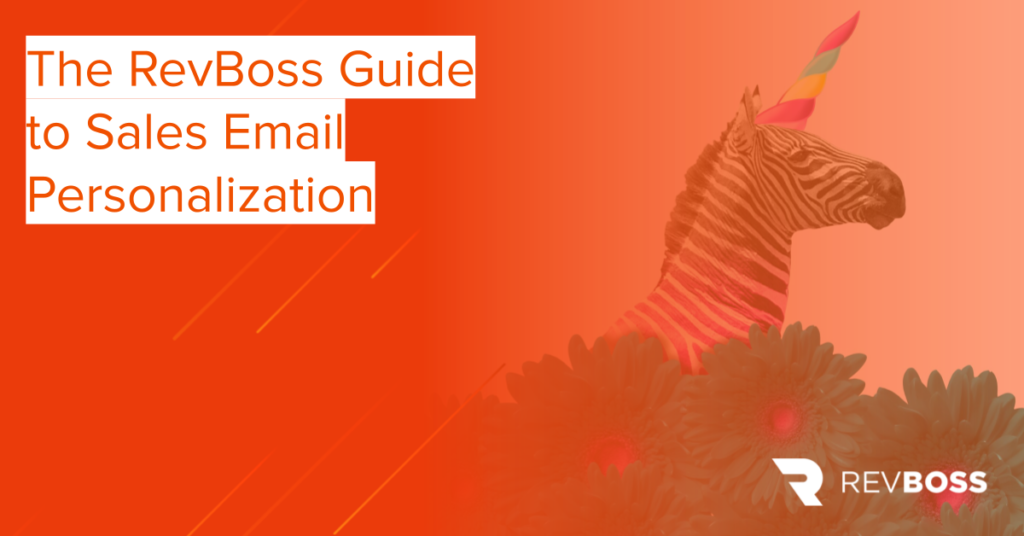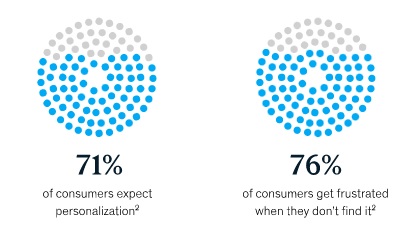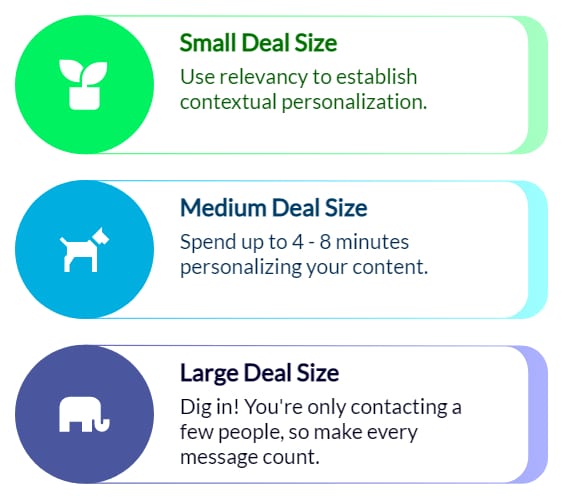The RevBoss Guide to Sales Email Personalization

Personalization has been a top buzzword of the 2020s in digital marketing — buyers want their experiences to align with their unique business, needs, and preferences at every step of the way. At the same time, however, marketing automation technology has pushed the envelope for companies to generate more leads in less time.
It’s left marketing teams with the challenge of balancing quality with quantity. Is it better to fill your pipeline with as many leads as possible, or should you focus more on a personalized experience for your very best-fit prospects? The answer is that it depends — and that you don’t necessarily have to sacrifice one for the other.
In this guide, we’ll explore how to get personalization right for your business — including how to determine what level of personalization your prospects expect, how to balance quality with scalability, and the process we use at RevBoss to personalize sales emails efficiently.
Quick Takeaways
- Personalization is necessary, but there isn’t a one-size-fits-all approach for every business.
- Marketing and sales teams should consider the type of relationship they have with their customers and average deal size in determining the level of personalization to use.
- The best approaches balance personalization with automation and practicality, crafting a customized approach that works for your business.
First thing’s first: Should you personalize at all?
We hear about personalization a lot today as though it’s the holy grail of email marketing — customers want the most personalized experience possible, and therefore we must go above and beyond to do it however we can.
There’s fairly good reasoning behind this message, too. McKinsey reports that three-quarters of consumers expect personalization and get frustrated when they don’t find it.

The truth, however — which you’ll know if you actually are an email marketer — is that a hyper personalized email marketing strategy isn’t always practical. Writing one-off, individually researched, targeted emails may be effective, but it isn’t scalable and can take up to 20-50% of your week to craft them for a very small group of prospects.
In many cases, the quick introduction → to-the-point value proposition → clear CTA format can be a winning approach for generating initial leads through email. Even if you haven’t personally answered one of these emails, there are plenty of prospects that do.
The magic formula to getting email personalization right is understanding your audience, the type of relationship you have with your customers, and the level of personalization you can realistically incorporate into your strategy while still earning significant ROI from your efforts.
Our golden rule: Some personalization is always necessary (i.e. at the very least you’re segmenting prospect lists to reach the right audiences), but the right type and amount isn’t the same for every business.
Let’s take a deeper dive into how you can evaluate your buyers and current email marketing strategy to adopt the right personalization approach for your organization.
What’s the right level of sales email personalization?
It may sound weird to think that less personalization could be the right strategy for you — but it’s true! Some companies will need to incorporate hyper-personalized approaches while others can cast a wide net and successfully generate the amount and quality of leads they need.
To determine the best approach for your business, answer the following questions:
What is the size of your market?
If you have an endless pool of prospects, along with countless industries in your target market, casting a wide net can be the most effective and scalable strategy. You may not want to invest resources in details that could distract from a process that will sufficiently do the job — you’re probably most concerned with reaching the max amount of people as quickly as possible.
If it ain’t broke, don’t fix it — you’ll certainly catch some wins this way, and you won’t have to over-exert your team or resources.
On the other hand, if your business is built on highly personalized relationships (for example, a high-level strategy consulting firm), you’ll likely need to invest in the type of time-consuming, well-researched emails we mentioned in the last section. The good news is that your individual deal size makes up the amount of time you spend prospecting.
What’s your price point?
Are your customers paying you $100/month for a software subscription? If so, see above — you should be reaching out to as many people as possible, as quickly as possible.
Anything beyond this likely won’t provide the value that you’re looking for, it could distract your team from more important things, and it’ll probably drive up your customer acquisition costs.
Scalability should be a top priority if you have a lower price point — and if you don’t already have a proven process in place, personalized content isn’t the most easily scalable next step.
On the other hand, clients paying four or five figures per month for your services likely expect a more personalized approach from your sales team and will require you to understand their very unique needs in order to win them over.

How much time do you have?
Personalized messaging in any form requires some level of commitment — and getting it right takes time and a fair amount of trial and error. If you don’t have a lot of wiggle room here, automated emails provide a good-enough medium for testing while still scaling your process and getting some quick results (good and bad) that can inform future approaches.
If you have a smaller pool of leads that all have potential to bring in high-revenue deals, you likely have more bandwidth to build a personalized approach with each of them.
Both approaches have their benefits — the former allows for more experimentation and refinement over time, while the latter ensures every message is designed personally for the prospect who receives it.
Personalization + Automation = BFF
You might be asking: Isn’t there a happy balance? A best-of-both-worlds approach? A way to keep things personalized without having to struggle for the time and budget to execute?
Good question — and the answer is yes. It is possible, and at RevBoss we’ve built a process that maintains a fairly high level of personalization while also optimizing processes to save you time and money.
Here’s how it works:
We start with a list of prospects that we sourced from RevBoss, create a Google sheet, and add columns for different qualifiers that are important to us.
For example: It’s helpful if we know if the company is hiring and, if so, if they’re hiring for sales positions. In this case, we also save the link to the job posting to include it in the email copy.
Other things we might want to know include:
- Size of the company
- Number of employees
- Structure of the sales team
- Target market
- Companies they’ve worked with before
- Link to their latest blog post
Some of these data points might be used indirectly (i.e. you can create two different messaging flows for one point of data), write static content that addresses each scenario, and then directly use the other data points as custom variables.
Since we’ve set it up like this, we can automate the repeatable research work with the help of cloud workers, and then use the data to construct our emails in a more efficient manner. Using a data-driven approach coupled with a template model allows us to personalize while still saving significant time and sales team bandwidth for prospecting.
What’s the takeaway?
The process outlined above works for RevBoss (and it can work for your business, too) but it’s not the only right approach to balancing personalization and automation. If there’s one thing we want you to take away from this, it’s that personalization should be implemented in ways that fit with the rest of your business model.
Here at RevBoss, we help clients execute sales prospecting strategies that balance scalability with quality, and deliver best-fit leads for their companies.
Our outbound email software and lead gen services are custom-built for startups, consultancies, marketing agencies, and other B2B organizations.
Schedule a quick call with us and find out how we can help you win more clients.
